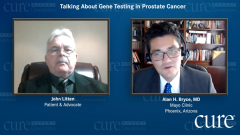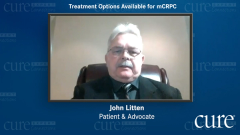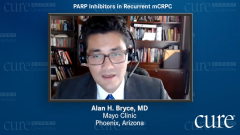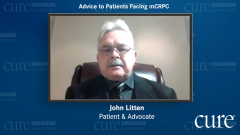
Future Use of PARP Inhibition in Prostate Cancer
Episodes in this series

Alan H. Bryce, M.D.: Let’s talk about the future of prostate cancer and where rucaparib fits into the current practice and where we see the next steps in the development of rucaparib—Rucabra is its trade name—in prostate cancer. Rucaparib is approved for the late-stage treatment of prostate cancer after one of the oral androgen pathway inhibitors, such as abiraterone or enzalutamide and after chemotherapy with a taxane, most commonly docetaxel. That ends up putting it as a fourth-line therapy, if you will, for men with prostate cancer who have this BRCA mutation. That is part of the normal drug development process. There are practical and ethical reasons why we usually develop new cancer drugs in late-stage treatment rather than early stage.
The next steps are to start moving those drugs forward. We do the initial study late to get a clear, positive signal and know that we’re on the right track, but then what we start doing is start testing the drug in earlier stage, in combinations, start tweaking the dose, the regimen, finding ways to optimize the drug and make it more effective. Make sure we’re getting the most out of it for every patient.
In prostate cancer, those studies are ongoing. For rucaparib specifically, there is the TRITON3 study, which is testing rucaparib earlier, before chemotherapy, but after one of the oral androgen pathway inhibitors. In the future, you can fully expect that there will be lots of combinations with PARP inhibitors in prostate cancer. Many of those studies are already ongoing. I fully expect there’s going to be a steady drumbeat of data and results over the coming years as the cancer community starts to figure out ways to optimize these treatment options.
In my own practice, rucaparib is one of our standard drugs for the 20% to 25% of men with prostate cancer who have a qualifying mutation. It’s a big part of the population. Almost a fifth or a quarter of men are going to have the kind of mutation that makes rucaparib a good treatment option.
In our practice at Mayo Clinic here in Arizona, every man with advanced disease should have genetic testing, and in our practice every man gets it. We test his inherited genes, his germline genes right from the beginning. Usually from the first appointment we’re having that conversation. Then we get biopsies to test the tumor whenever there is a growing spot where we can easily get a piece of the tissue.
A key point here is that cancer evolves. By definition, cancer is a cell that’s mutating. The prostate cancer might look relatively quiet in the beginning, but after years of therapy, hormones, and chemotherapy, it can start to acquire more mutations and look different. An important point is repeat testing. As we saw in John’s case, his inherited genes were normal, but the tumor had the mutation. It’s not enough to just look at the inherited genes. We also must look at the tumor mutations. Then look at it again as the cancer evolves over time.
Transcript Edited for Clarity























